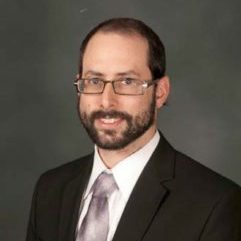Several years ago the Norfolk Kollel was invited to Present in the Old Dominion University as part of their Jewish Symposium. I presented my understanding of the parallels between Orwell’s 1984 and the Dor Haflagah (Tower of Babylon). The main idea was based on the concept of Newspeak and the idea that “War is Peace” but there were many other fine parallels as well.
Most of the presenters were nerdy professors reading papers. I presented in the only way I knew how – just as I would deliver a class or a Dvar Torah. I felt a little unacademic but Professor Frederick Lubich (Head of Languages) made a point of complimenting my “disarming, off-the-cuff style”.
It isn’t very bloggy, but here it is:
The tower of Babylon is described in Genesis 11. 1787 BCE 3775 years ago (1973 years after creation).
The Torah records that at this time large populations migrated from the East and settled in Babylon, which is present day Iraq, probably around Baghdad . At this time all the people were of One Safah, one language and one manner of speaking.
At this point Nimrod who was the leader declared a war on G-d and had everyone build a tower. He was intent on rebelling against G-d.
The Jerusalem Talmud records an unusual argument between Rabbi Eliezer and Rabbi Yochanan, one said that they actually spoke seventy languages, while the other understood that they spoke only one language, that of G-d. I.e. Hebrew.
The field of Linguistics deals with the etymology of languages and seeks to explain the differences and similarities between various languages and cultures. Yiddish has many words that cannot be expressed in any other language, and there are many words that can not be described in Hebrew.
In days before people who were hard of hearing could be taught to read they were considered to be of lesser intelligence, simply because they possessed less words with which to articulate complex thoughts. The bible (Ester) refers to “every nation and their language”, in describing diverse cultures. Roget in his introduction to the thesaurus states that his main intention is not to make writing more colorful but rather to provide a vehicle in which thinking itself could be more creative. Rabbi Tzadok Hacohen (Kometz Mincha 20) writes that the tongue or the language is the quill of the heart. Just as the Quill is able to take thoughts and transcribe them onto paper, there is a step before this where the emotions of the heart are transcribed into words, thus language is to the heart what a pen is to the mind. The Chovos Halevavos (Bechina 5) enjoins man to meditate on all the good that G-d has given him. He writes, “Now think about the good which has been given to man through the power of speech and articulation. For with them he can present that which is in his soul and inner recesses, and with them he can understand the feelings of others. The tongue is the quill of the heart and the agent of his hidden thoughts. If man would not be capable of speech, we would be entirely unintelligent and animalistic. Speech is what separates Man from all other species; with it we make pacts among ourselves and with G-d, with speech we beg forgiveness, which is the highest indicator of our intelligence.”
In linguistics there are two schools of thought, one believes that all men are created equal and it is only the culture and nuances of society that cause us to be different than each other. The other, more realistic view is that we were all created different and it for that reason that many different languages and slang has evolved. Even if theoretically we could all speak one language and thus all think in the same way, there would be peace on earth but it last for only a short time because ultimately the uniqueness within us would awaken and new languages would emerge.
Both Rabbi Eliezer and Rabbi Yochanan had difficulties with the idea of everyone speaking the same language. One resolves it by saying that perhaps they spoke the same language, but it was only a “Safah” from the lips outwards, inside they all had completely different emotions, which just hadn’t been articulated in to individual languages. Rabbi Eliezer preferred to take the verse at face value; at one point everyone was truly unified, it was only after this unity was used for the wrong purpose that we were split. Either way the pieces of the puzzle can be put back together.
Where Nimrod went about bringing unity in the wrong way, Abraham was able to welcome and respect everyone without losing sight of the reason for all our differences: together and praise G-d.
My father compares this to a bicycle wheel, composed of a hub, spokes and a rim. On its own the hub is quite useless, it can only be strengthened by a large number of spokes jutting from it each in a little bit of a different direction and finally being encircled by the rim. If any of the spokes disconnects itself from the hub the wheel will not be strong. At the same time if we are not all headed toward the praising of G-d the rim will be equally weak. Nimrod dealt with the spokes using his own personal hub and rim. This did not work. Abraham, his contemporary, allowed everything to work within G-d’s original design.

0 Comments